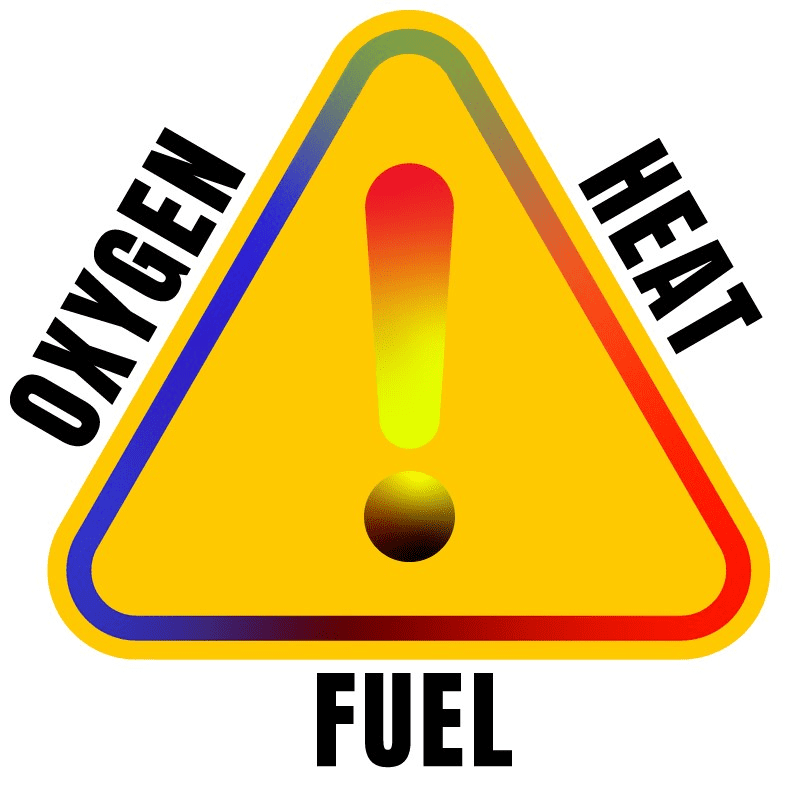Understanding intrinsic safety certification for Smart PPE use in certain applications, such as oil and gas and mining.
The oil and gas industry is inherently risky, especially when it comes to explosions. Therefore, it is critical that oil and gas worker products be “Intrinsically Safe (IS).” When a device is certified with the IS designation, its electrical and thermal energy levels are too low to ignite hazardous atmospheric mixtures, uniquely qualifying these products for use in dangerous environments such as oil and gas platforms. The process for obtaining intrinsic safety certification is rigorous, time-consuming, and expensive – and rightfully so, since the end result is a product that lowers risk of explosion for workers in these hazardous locations. It’s important, then, that safety managers consider Smart PPE devices that are certified intrinsically safe. When workers are protected with IS-certified Smart PPE devices, especially those that offer continuous safety monitoring, they are given the highest level of job protection.
Because the oil and gas industry operates in inherently risky environments for workers, it’s critical for its Smart PPE products to be intrinsically safe.
Oil and gas workers operate in environments that already contain both fuel and oxygen, so all it takes is a single ignition source from a Smart PPE device to create an explosion. Platforms, refineries, and transportation all present explosion risks for workers – and while an open flame or welding activity are clear dangers, a single spark from a device battery or a hot device surface is enough to ignite fuel when oxygen is present. Because flammable gases are released from wells, trucks, equipment, and shale shakers, explosion risk is present all across the oil and gas production chain. If there is fuel in the air, an ignition source can spark an explosion – and since oxygen and fuel sources can’t be controlled on dangerous work sites, the ignition source must be controlled.
Worker devices, such as cell phones and Smart PPE, are a specific area of concern for ignition sources. Two things can act as an ignition source for explosion: a spark or pure heat. A spark is created by the rapid release of energy by a device’s components, mainly the battery, capacitors, and inductors. Each [CG1] of these elements has the potential for sparking because they both store and release energy. While the battery is the initial source of energy, over time it charges the capacitors and inductors and, if anything fails throughout this energy circuit, energy is released in the form of a spark.
 It’s also possible for a device to release enough pure energy to start a fire. This phenomenon of spontaneous combustion is caused by spontaneous heating, which occurs when the oxidation of an element over time results in an extremely hot bulk temperature, unassisted by any external source. A common depiction of this phenomenon is a sudden fire combusting in a pile of oily rags – the oxidation of the hydrocarbon present in the cloth constitutes a serious fire risk. This same combustion can occur when a device’s components store enough energy to spontaneously heat very quickly in a runaway reaction, resulting in enough released energy to ignite a fire when fuel and oxygen are present. This is especially dangerous in a loaded environment like an oil platform or refinery, where fuel and oxygen are present in the atmosphere at very high levels.
It’s also possible for a device to release enough pure energy to start a fire. This phenomenon of spontaneous combustion is caused by spontaneous heating, which occurs when the oxidation of an element over time results in an extremely hot bulk temperature, unassisted by any external source. A common depiction of this phenomenon is a sudden fire combusting in a pile of oily rags – the oxidation of the hydrocarbon present in the cloth constitutes a serious fire risk. This same combustion can occur when a device’s components store enough energy to spontaneously heat very quickly in a runaway reaction, resulting in enough released energy to ignite a fire when fuel and oxygen are present. This is especially dangerous in a loaded environment like an oil platform or refinery, where fuel and oxygen are present in the atmosphere at very high levels.
Smart PPE, such as safety monitoring devices, must be certified as intrinsically safe for use in the oil and gas industry.
This designation is achieved through Intrinsic Safety Certification, a highly involved, rigorous process that measures the energy risk in the device according to each component. Every storage component – battery, capacitor, inductor – must be analyzed individually and together, since each one stores and releases energy within the circuit.
IS certification also involves testing the device and its components through the intentional insertion of failures into the system to determine how well it can withstand those failures. And IS certification calls for testing in abnormal cases, such as the device being dropped into a substance or being crushed by a heavy object. Product developers must ensure the device will maintain control of its internal energy, not get too hot or cause a spark, no matter the conditions.
Products certified as intrinsically safe follow rigorous, expensive, and time-consuming certification guidelines.
Intrinsic Safety testing and certification are highly specialized, especially when compared to a normal FCC compliance test for a cell phone. While there are hundreds of labs for Federal Communications Commission (FCC) testing, there are just a handful of intrinsic safety labs that can test and certify products, including Underwriters Laboratories, the Mine Safety and Health Administration (MSHA), and Intertek Group. For most of the world, the standards of the International Electrotechnical Commission (IEC) are followed for this certification.
These testing and certification labs must be IS certified as well. Tests are dangerous; for a normal battery test, product designers can rely on inherent protective measures to prevent catastrophic failures within a battery module; however, with IS testing, all internal safety items inside a battery must be disabled and only then is the battery tested to make sure it cannot cause ignition, regardless of the nature of the fault.
IS certification is done in parallel with product development, marking another difference between IS and regular FCC compliance. While it’s not terribly difficult to pass an FCC certification for most electronic devices after they are built, that same build-then-test process won’t work for an IS-certified Smart PPE device. Developers must think about the end product’s individual components and how they might contribute to an explosion – both individually and collectively – while the product is in development, not after it’s finished. It’s not enough to design a product and then conduct IS testing with the assumption that it will pass the tests; it must be done concurrently to ensure the product will meet the exacting IS guidelines.
In fact, the best industrial Smart PPE developers consider the Intrinsic Safety of the final product first, and then design the product from the ground up. If the end result is not considered from the beginning, the entire product will likely fail certification.
Smart PPE that is IS-certified can fully protect individual workers – from both physiological risk and ignition source risk.
When Smart PPE devices such as safety monitors are built from the ground up and IS-certified, they offer double protection to workers at inherently risky work locations. These devices, which track physiological indicators such as body temperature and heart rate, alert workers and management to potentially deadly heat-related injuries, making them critical for oil and gas workers in hot, dangerous environments such as platforms, refineries, and downstream transportation channels. And when IS certification is built in, Smart PPE safety monitoring devices provide workers with equally critical protection against ignition source risk.
Beyond the obvious safety protection of IS-certified Smart PPE devices in oil and gas locations, these devices also streamline safety monitoring, making it easier to remotely monitor workers in risky environments. Since workers often must pass through massive doors or air locks to enter or work in dangerous areas, if something happens inside the risky area, it’s not as easy as looking across a factory floor to see if the worker is okay. Managers in oil and gas locations must don PPE to enter dangerous spaces, which alone can take 15-20 minutes. Safety monitoring also minimizes the number of people in the space, reducing human error when people enter and exit dangerous areas with non-IS Smart PPE devices.
Using one IS-certified Smart PPE safety monitoring system across a workforce also streamlines the purchasing decision and reduces the number of products a worker might need to manage. Rather than monitoring heart rate with a fitness device in one location and heat stress with an IS-certified device in another location, one IS-certified Smart PPE device can accomplish both goals for all workers, in all locations. This strategy reduces the number of Smart PPE devices any one worker needs to wear and keep track of. Workers can thus stay physiologically safe while staying intrinsically safe in all environments – with one Smart PPE device.
When protecting workers, it’s key to keep all aspects of their safety in mind. When selecting Smart PPE to monitor physiological indicators for heat stress, safety managers should prioritize products that are IS-certified, because of the inherent heat and ignition source risk at oil and gas work sites – from the upstream platform to the downstream pipeline. And Smart PPE that is designed from the ground up and IS-certified can protect workers from both the risk of explosion and the risk of injury from heat stress. In order to fully protect workers, safety managers should prioritize Intrinsic Safety certification when purchasing Smart PPE safety monitoring devices.
Heidi E. Lehmann is Chief Commercial Officer and a Co-Founder of Kenzen, the smart PPE innovator focused on physiological monitoring and the prevention of heat injury and death among workers. Kenzen’s real-time heat monitoring system is used by companies to keep workers safe from heat. Heidi is a mobile technology entrepreneur in the connected devices / wearable products, mobile platforms and distributed media arena.
Skip Orvis is Vice President, Engineering at Kenzen. Skip has more than 20 years of product development experience for both the Consumer and Industrial markets. He is also a U.S. Navy veteran who has experience working in extreme conditions through multiple deployments to the Middle East.







